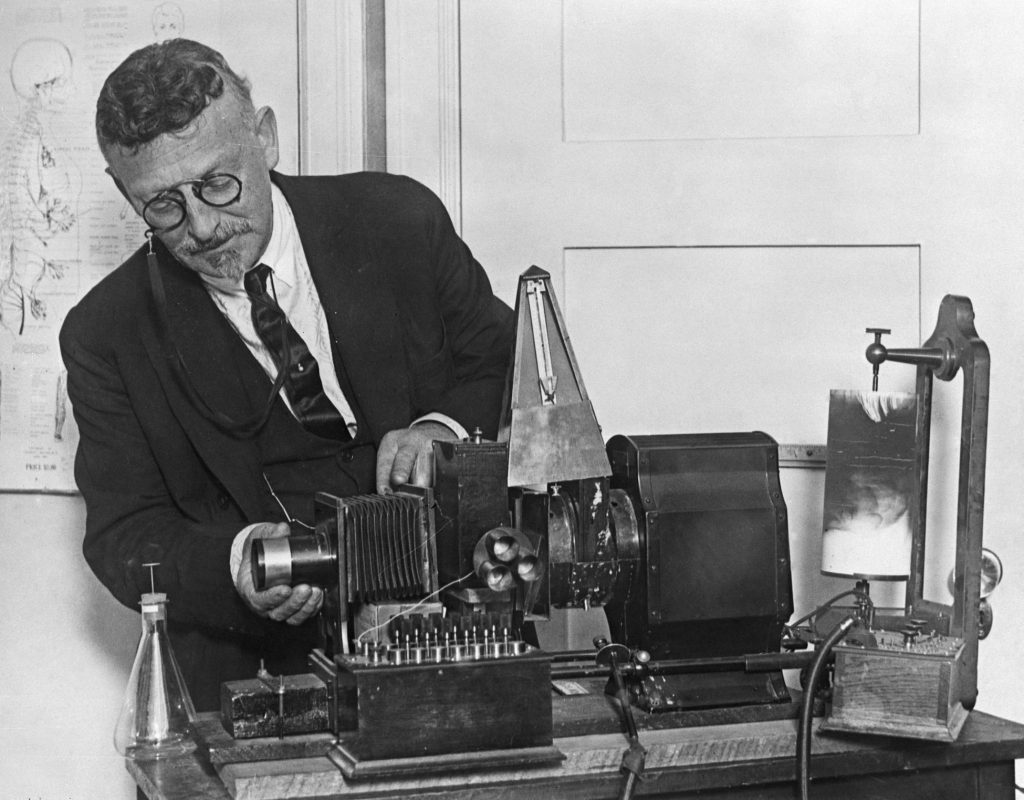
One hundred years ago, Dr. Albert Abrams was the most celebrated physician in the United States.
He singlehandedly pioneered a revolutionary way of tackling illnesses and disease. “The spirit of the age is radio, and we can use radio in diagnosis,” he declared. Thus Abrams created “spancho-diagnosis,” which involved the use of an electronic device called a dynamizer to analyze patients’ blood samples.
Abrams theorized that different diseases emitted different “electronic reactions.” He confidently claimed that his dynamizer could diagnose most diseases. Furthermore, a small sample of blood could typically reveal a patient’s age, gender, and even religious affiliation.
Critics and rivals expressed their doubts.
But as historian Rick Beyer points out: “Abrams was lionized by a grateful nation. He lectured to packed crowds across the country. He leased out thousands of his machines, and made millions from his success.”
Oh, and one other thing: He forbade anyone from looking inside one of his dynamizers.
That’s too bad, because what they would have found inside was, in the words of Nobel Prize-winning physicist Robert Millikan, “a contraption which might have been thrown together by a ten-year-old boy who knows a little about electricity to mystify an eight-year-old boy who knows nothing about it.”
Dr. Abrams, in other words, was a con artist. His dynamizer is considered the most spectacular hoax in American medical history.
The truth began to emerge when a representative of the American Medical Association asked one of Abrams’ disciples to test a blood sample. The result indicated that the patient had malaria, syphilis, cancer, and diabetes. The sample was in fact from a Plymouth Rock rooster.
Abrams’ dynamizer was nothing more than a “black box” – an empty shell that masqueraded as something miraculous. Pay no attention to that man behind the curtain.
If you’re tempted to think that sophisticated people in the 21st century could never be taken in by such a con, consider the case of Elizabeth Holmes, a 19-year-old college dropout who in 2003 launched a company called Theranos. Holmes claimed that her team had developed the “Edison Test,” which could detect serious health conditions (including cancer) with only a few drops of blood. Needle pricks would become obsolete.
Celebrities, politicians, and well-heeled investors enthusiastically funded her efforts. By 2014, Theranos was valued at around $9 billion. Forbes magazine christened Holmes the “next Steve Jobs.” Time included her on its list of the Most Influential People in the World.
But it was all too good to be true.
Just a year later, an investigative journalist revealed that the Edison Test didn’t work. Holmes had instructed her colleagues to cover up that important piece of information. In January this year she was convicted on four counts of defrauding investors and is now facing up to 20 years in prison.
It’s depressing to have the experience of being taken in. Unfortunately, that’s how myriads of people have felt in various places of worship.
It happens when priests, pastors, rabbis, and televangelists declare that only a few people can really know and understand God’s secrets. To the rest of us they say, “Don’t ask questions, just believe.”
If you ever hear those words, run for your life. Your spiritual life.
Jesus made it clear that if there are such things as “God’s secrets,” they have become open secrets: “Ask and it will be given to you; seek and you will find; knock and the door will be opened to you. For everyone who asks receives; the one who seeks finds; and to the one who knocks, the door will be opened” (Matthew 7:7,8).
In other words, there are no black boxes in the kingdom of God. There is no privileged information.
Everybody gets to see for himself or herself if this way of life really works.
And those who seek will find.
